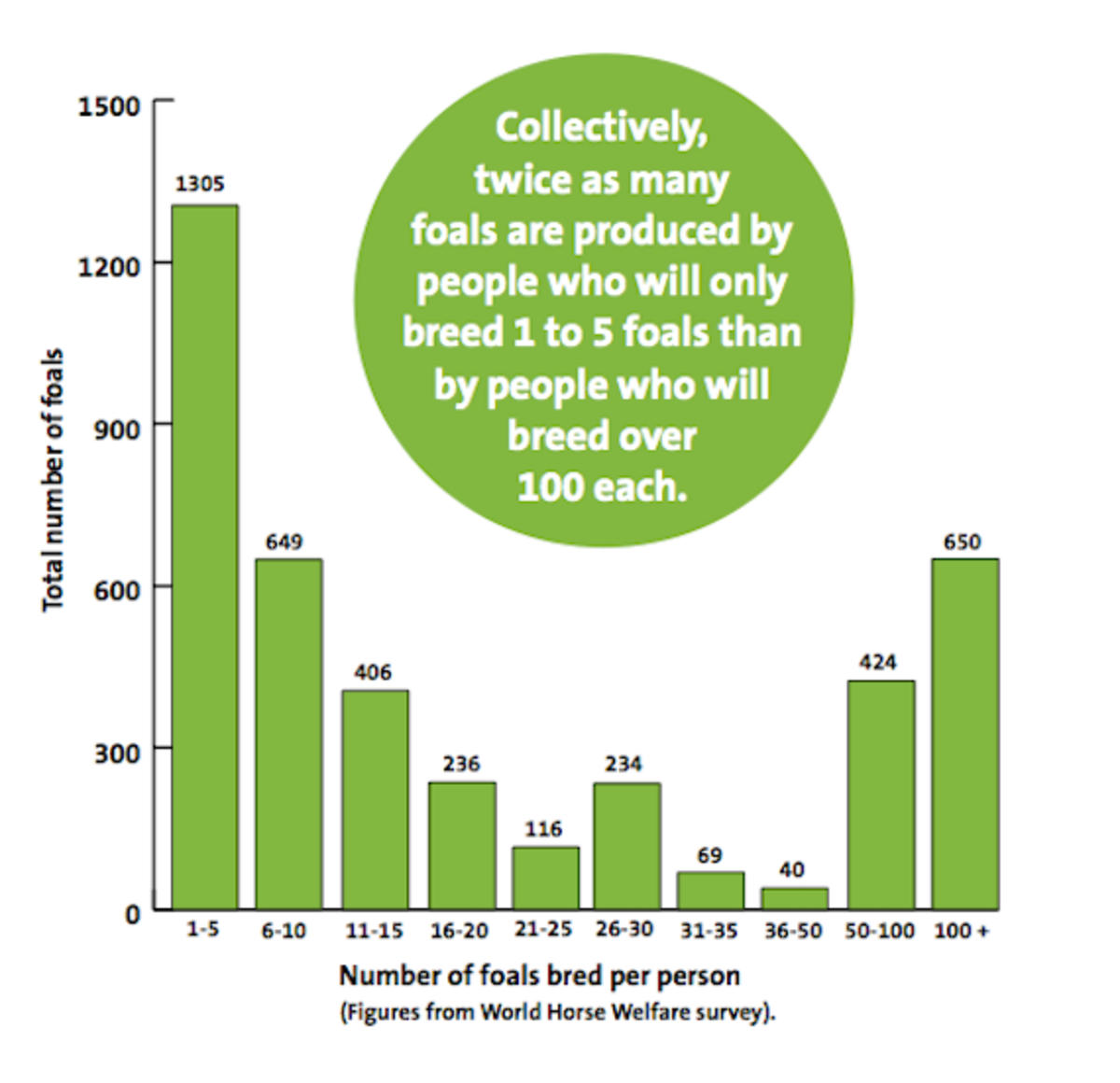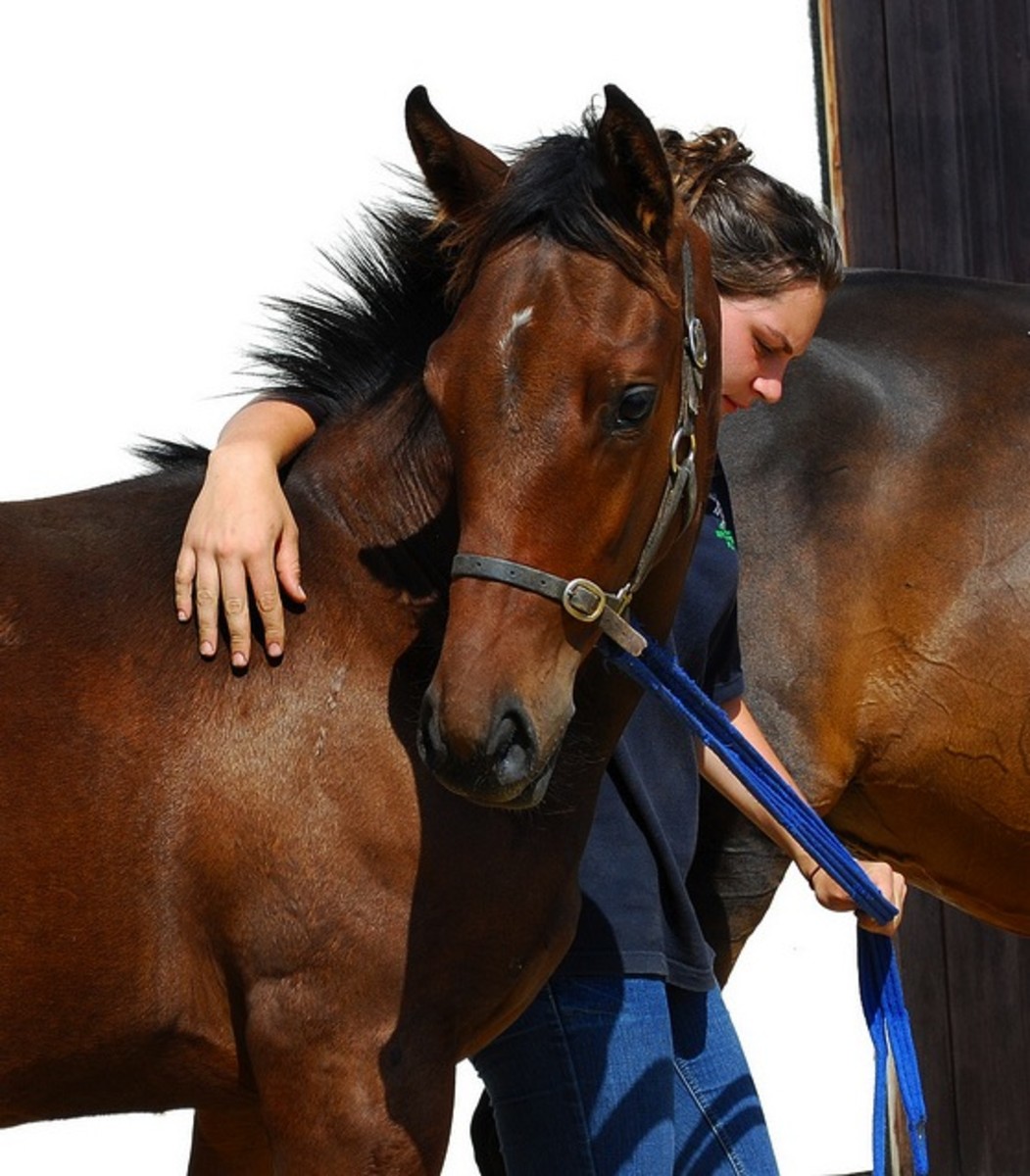World Horse Welfare campaign bluntly asks horse owners: “Do you really need to breed?”
- March 10, 2017
- ⎯ Fran Jurga
[VIDEOSINGLE type=”youtube” keyid=”BjT12xSpp9U”, width=”560″, height=”344″]
It’s the elephant in the barn aisle. Horse owners tip toe around the question, never quite daring to mouth the words.
When a friend announces to you that he or she is perusing the stallion ads for a prospective mating to a beloved mare, what’s the polite answer?
A British horse charity is asking the not-so-polite one, and?turning some heads as they question, “Do you really need to breed?”
And many of us are responding, “Well, it depends…”

There is no question that indiscriminate and unplanned breeding is rampant among non-pro owners. There are too many stallions; most breeds in the United States have no stallion testing or approval processes and the excuse of “not getting around” to gelding, or objection on cultural grounds, is often heard. The number of mares judged to be in foal, along with mares with foals at their sides, that are going through horse auctions is another disturbing fact.
We have subsidized castration clinics for people with financial limitations, and some veterinary clinics report their reproduction services are down, but we still see a flood of “stallion issues” and “foal issues” spring from the presses each spring as horse magazines continue to portray breeding one’s mare as an emotional enterprise as well as an animal husbandry undertaking.
The widespread availability of artificial insemination has meant that it is easier than ever to book a long-distance mating to the stallion of your dreams. Yet there is a difference between people who breed a mare because, as one owner told me, “I want the kids to experience birth and raising a foal” and people who own a good mare, invest in the semen of a better stallion, and genuinely want to produce their next riding or show horses.
The advent of embryo transfer has meant that a single valuable mare can produce multiple embryos each year that can be transferred to a surrogate mare. The star mare can even go on competing, as we saw in Great Britain with Rolex Kentucky winner Headley Brittania.
With 7,000 horses in Britain — and many times that many in the USA — deemed at risk of needing rescue or new homes, World Horse Welfare‘s new campaign aims to help horse owners understand the impacts, costs and risks associated with breeding.
And it’s sure to strike a nerve with horse owners who believe that it shouldn’t apply to them. Still others will object because they fear that their freedoms are being challenged, or that professional breeders want to cut out the competition of amateurs, who may sell their young stock below perceived values.
Research conducted by the charity showing that collectively, twice as many foals were produced by those who had bred only one to five foals in their lifetimes than by those who had bred over 100 each.
“Professional breeders, dealers and the racing industry are often blamed for producing too many horses, and while this may be true, the numbers appear to be reducing in line with the current market,” says Roly Owers, Chief Executive of World Horse Welfare. “Evidence suggests that in racing alone numbers have reduced by 25%.”
“With these bigger players, you would think that those who produce just one foal, or a couple in their lifetimes, aren’t making an impact. But our research shows that this just isn’t the case – each horse owner makes an impact and we hope our initiative will help guide them through the considerations of breeding in a compassionate, realistic and informative way.
“It is vital that every group acknowledges their contribution to the problem and takes steps to rectify it.”

According to the breeding survey from World Horse Welfare that was completed by nearly 4,000 horse owners in the UK, almost a quarter of respondents had bred from the horses they currently own, producing a total of 4,129 foals, and many more were hoping to breed in the future. Respondents breeding just 1-5 foals each were responsible for over a third of all the foals bred.
With thousands of people all doing the same, this means a huge number of extra horses born every year; every foal born increases the chance of neglect either to that horse directly or by taking up a valuable home and thus pushing another horse into an awful situation. World Horse Welfare witnesses first hand just how the breeding of foals can lead to abandonment and severe neglect, the charity has already seen a 40% increase in the number of horses coming into its centers in 2013.
Overall, the top five reasons why people bred from their horse were:
- To produce a foal to compete on in the future.
- Because the horse had a nice nature.
- To continue the horse’s bloodline.
- To produce a foal they could use for leisure riding or driving in the future.
- Because the horse had a good competition record.

Owers continues: “No matter what steps you take to produce a healthy foal, it is always possible that he or she could be born with, or develop a problem. Even a top quality mare and stallion can produce a foal with conformational, developmental or behavioral problems. There is no guarantee that the foal you breed will be suitable for its intended role.
Half of respondents who had bred from their stallion did so to produce a horse that could be brought on and sold in the future.
“Horses are the same as anything else in that the more there are, the less money they sell for. When horses are readily available for little money, some being sold for as little as ?5, this often leads to unscrupulous people taking advantage of the situation.
“Breeding a foal can be a wonderfully rewarding experience. However, it is important to consider all the potential problems before making the decision, and whether there may be a better option.”

World Horse Welfare’s message is that your choices as a horse owner can make a real difference to many horses’ lives, not only to reduce the amount of neglect, but also to make it easier for horses to find good, safe homes in the future.
Most of World Horse Welfare’s work is widely supported and tends to benefit horses that have been the object of abuse or neglect, horses being shipped long distance to slaughter, safety for sport and racing horses, or even advances in veterinary research or horsecare education in developing countries. But with this move, World Horse Welfare points the finger at the very people who have been sustaining the organization — British horse owners — and asks them to consider that they might be part of the problem.
“Need to Breed” also will cross some lines when asking for the support of the veterinary community; vet practices profit from backyard breeders, and when vets do try to discourage owners from breeding, they often get doors slammed in their faces. Should you breed an Icelandic mare to an Akhal-Teke stallion? Don’t laugh, it’s the kind of question that veterinarians run into all the time.
Perusing the weekly offerings of the Camelot Horse Auction in New Jersey, photographed poignantly by Sarah K. Andrew, will show you a portfolio of horses whose breeders, whether pro or amateur, felt the need to create a horse. But someone, somewhere down the line was unable to give that horse the home and care it needed. Camelot and its generous network of horse owners give these horses another chance, but they are the cream of a bumper crop of unwanted horses.
If you are planning to breed from your horse or you know someone that is, please, pass on World Horse Welfare’s leaflet which outlines some important points for consideration and please, think long and hard: do you Need to Breed?
Visit World Horse Welfare’s webpage to find out more about the??Need to Breed?’ initiative, where you can access the leaflet and watch the video:?www.worldhorsewelfare.org/needtobreed
Leave a comment here on The Jurga Report to share your opinion.








